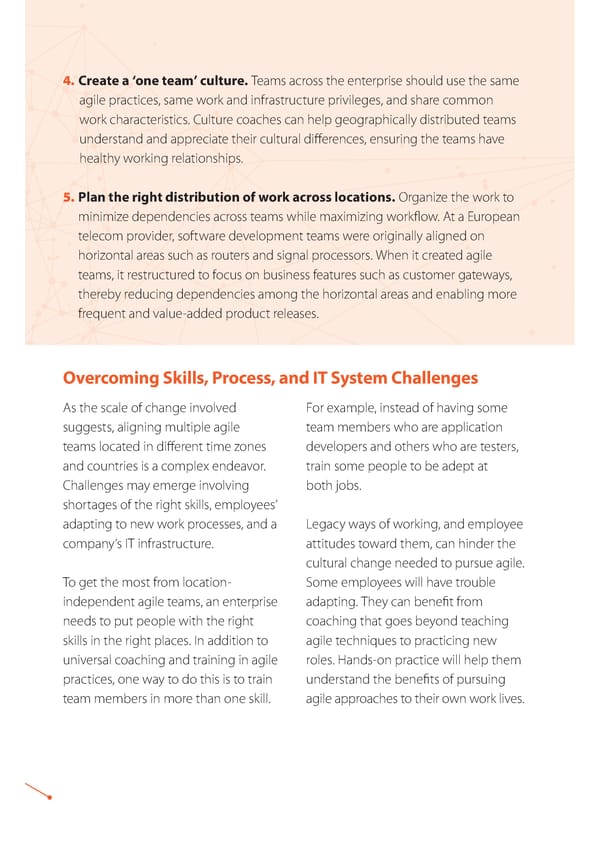4. Create a ‘one team’ culture. T eams across the enterprise should use the same agile practices, same work and infrastructure privileges, and share common work characteristics. Culture coaches can help geographically distributed teams understand and appreciate their cultural differences, ensuring the teams have healthy working relationships. 5. Pl an the right distribution of work across locations. Organize the work to minimize dependencies across teams while maximizing workflow. At a European telecom provider, software development teams were originally aligned on horizontal areas such as routers and signal processors. When it created agile teams, it restructured to focus on business features such as customer gateways, thereby reducing dependencies among the horizontal areas and enabling more frequent and value-added product releases. Overcoming Skills, Process, and IT System Challenges As the scale of change involved For example, instead of having some suggests, aligning multiple agile team members who are application teams located in different time zones developers and others who are testers, and countries is a complex endeavor. train some people to be adept at Challenges may emerge involving both jobs. shortages of the right skills, employees’ adapting to new work processes, and a Legacy ways of working, and employee company’s IT infrastructure. attitudes toward them, can hinder the cultural change needed to pursue agile. To get the most from location- Some employees will have trouble independent agile teams, an enterprise adapting. They can benefit from needs to put people with the right coaching that goes beyond teaching skills in the right places. In addition to agile techniques to practicing new universal coaching and training in agile roles. Hands-on practice will help them practices, one way to do this is to train understand the benefits of pursuing team members in more than one skill. agile approaches to their own work lives.
 The Essence of Agile Page 18 Page 20
The Essence of Agile Page 18 Page 20